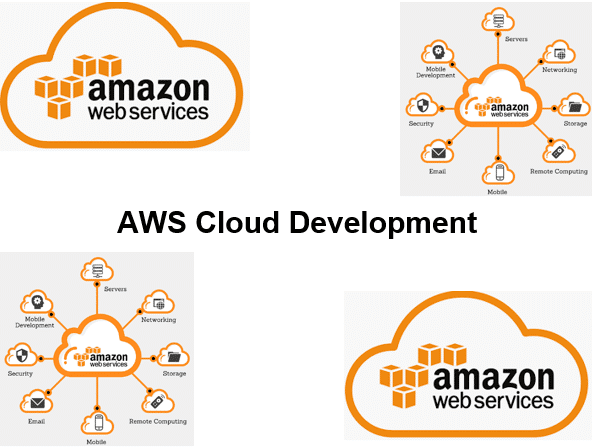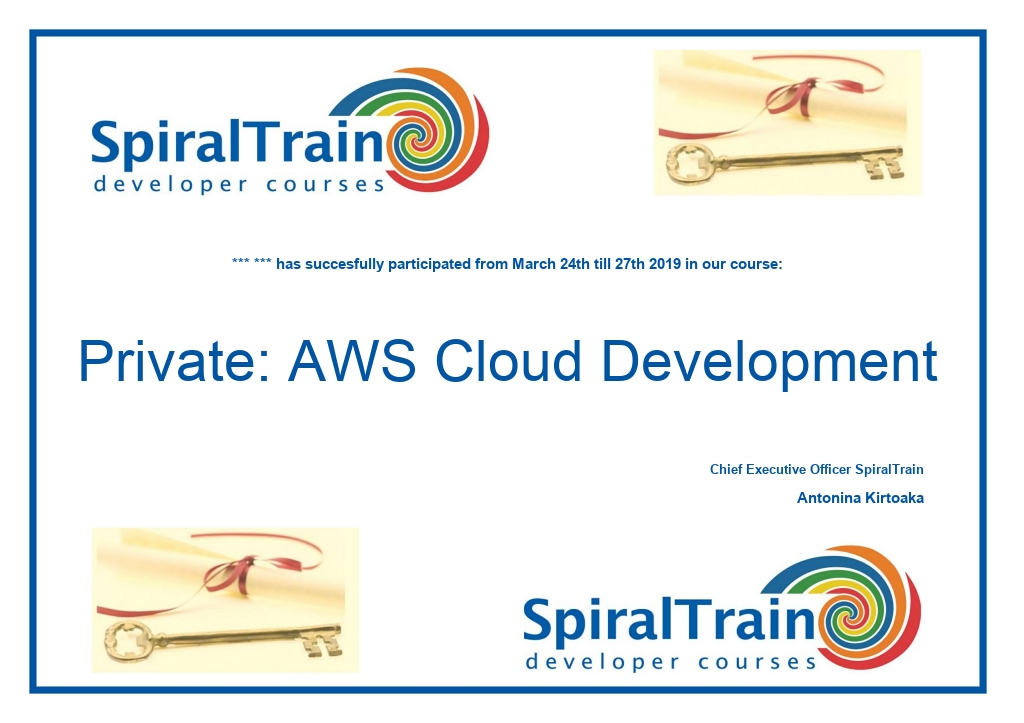-
Learning by doing
-
Trainers with practical experience
-
Classroom training
-
Detailed course material
-
Clear content description
-
Tailormade content possible
-
Training that proceeds
-
Small groups
In the course AWS for Developers from SpiralTrain participants learn to use Amazon Web Services (AWS) for the development of Cloud Applications and Services. AWS is a widely used Cloud Platform that allows companies and individuals to run applications based on a Pay as You go model in AWS server farms.
The course AWS for Developers kicks off with an overview of the key services offered by AWS. This includes Compute, Storage and Free Services as well as Virtual Servers. The AWS Architecture, availability zones and the pricing model are also discussed.
Then it is time for a coverage of the use of EC2 instances. EC2 instances are VPCs that are based on Amazon Machine Images (AMIs) but that can be set up entirely at your own discretion. Making connections, allocating storage and the security of EC2 are treated.
Next the AWS orchestration service Elastic Beanstalk on which applications can be deployed is discussed. EBS supports various programming languages and offers services such as load balancing, auto scaling and security with a firewall.
The use of databases in the AWS Cloud is also part of the program of the course. The Relational Database Service is central to this and links to databases such as MySQL and PostgreSQL are covered. Attention is also paid to NoSQL databases and to the creation and management of S3 Storage Buckets.
AWS also supports serverless computing with AWS Lambda. It is explained that serverless computing does not mean that no servers are used, but that the management of servers is completely taken off your hands by AWS. Next the response to events, automatic scaling and orchestration of functions is treated.
Finally attention is paid to setting up Virtual Networks in the AWS Cloud. This includes AWS Networking with Elastic IP Addresses, Internet Gateways, Security Groups and Network Address Translation.
The course AWS for Developers is intended for developers who want to use Amazon Web Services to develop and deploy cloud applications.
Experience with a modern programming language such as C#, Java, Python or PHP is required to participate in this course.
The theory is treated on the basis of presentation slides and demos. During the course theory and exercises are interchanged.
After successful completion of the course attendants will receive a certificate of participation in AWS for Developers.

Module 1 : AWS Intro |
Module 2 : EC2 Instances |
Module 3 : Elastic Beanstalk |
|
Amazon Web Services AWS Cloud Computing Compute Services Virtual Servers Storage Services AWS CloudFront AWS Architecture AWS Regions Availability Zones AWS CLI Developer Tools AWS Pricing Free Services |
What is AWS EC2? EC2 Instance Types Amazon Machine Images EC2 VPC's Selecting Storage Elastic Block Storage Security Groups EC2 Key Pair IAM Users Instance Creation Instance Tagging Connect to EC2 Instance EC2 Monitoring |
What is Elastic Beanstalk? Elastic Beanstalk Architecture Beanstalk Environment Web Server Environment Deploying Applications Supported Languages Elastic Load Balancer Auto Scaling Group Host Manager Creating Firewall Worker Environment Communication with Queue Deploying on EBS |
Module 4 : Data Access |
Module 5 : AWS Lambda |
Module 6 : Virtual Networks |
|
Relational Database Service DB Instances RDS Database Types MySQL and PostgreSQL Amazon Aurora Query API Scaling RDS NoSQL Database Service DynamoDB AWS S3 Storage S3 Buckets Managing Buckets S3 Glacier |
What is AWS Lambda? Serverless Computing Automating Infrastructure Automated Administration Reacting to Events HTTP Requests Supported Languages Custom Backends Fault Tolerance Automatic Scaling Running Container Images Orchestrating Functions Pay per Use |
AWS Networking Virtual Private Cloud (VPC) Elastic IP Addresses Private and Public IP Subnets Route Tables Internet Gateway Security Group Network ACL Understanding VPC CIDR Network Address Translation NAT Gateway Private Connectivity Options |
